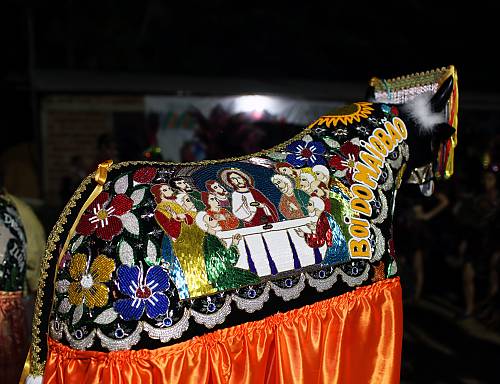Cultural Complex of Bumba-meu-boi from Maranhão
Inscribed in 2019 (14.COM) on the Representative List of the Intangible Cultural Heritage of Humanity
The Cultural Complex of Bumba-meu-boi from Maranhão is a ritualistic practice involving forms of musical, choreographic, performing and ludic expression, in which the practitioners’ relationship with the sacred is mediated by the figure of the ox. The practice features certain key distinguishing elements: the cycle of life; the mystical-religious universe; and the ox itself. The practice is heavily charged with symbolism: by reproducing the cycle of birth, life and death, it offers a metaphor for human existence itself. There are similar forms of expression in other Brazilian states, but in Maranhão Bumba-meu-boi is distinguished by the various styles and groups it includes, as well as by the intrinsic relationship between faith, festivities and art. Each year, the Bumba groups from Maranhão reinvent this celebration, creating the songs, comedies, the embroideries on the ox leather and the performers’ costumes. Divided into five main ‘accents’ with particular features, the groups, albeit diverse, share a yearly calendar of performances and festivities. The festival cycle – which reaches its peak at the end of June – may last for four to eight months, involving the following stages: rehearsals; the pre-season; baptisms; public performances or ‘brincadas’; and rituals around the ox’s death. The practice is a period of renovation during which energies are reinvigorated, and is transmitted through children’s groups, dance workshops, and spontaneously within the group.










